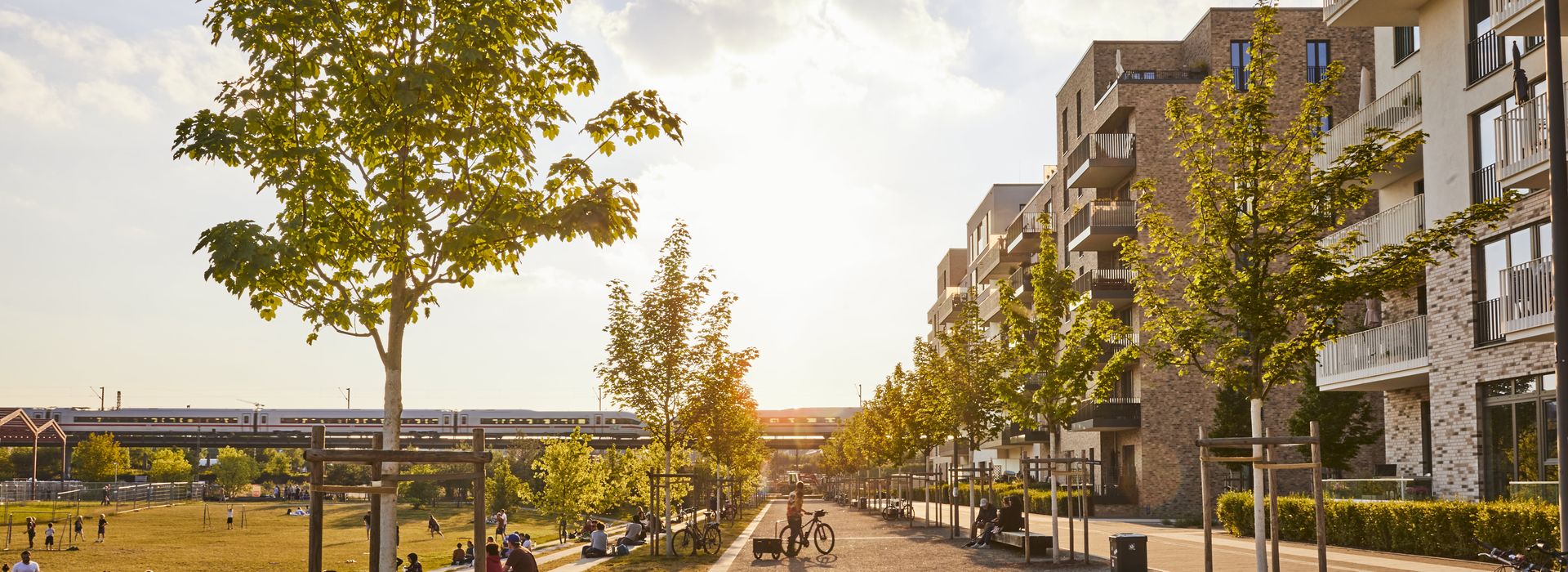
01.10.2021
Cities in the 21st century: green, compact, a bit medieval
The trend towards urbanization is permanent and steady. The millennia-old concept of the city is proving to be consistent and resilient. In times of climate change, digitalization, and demographic change it provides the blueprint for the development of green cities of the future. In his guest article, Prof. Dr. Tobias Just, Chair of Real Estate Management at the International Real Estate Business School (IREBS) of the University of Regensburg, explains what has always made cities attractive to people and which factors will shape the way we work, shop and live together in urban spaces in the future.
Urban development: What makes cities attractive to people?
The history of humankind has been closely connected with the history of cities for thousands of years. Few developments have been as permanent and steady as the trend toward urbanization. Although people sometimes refer to the present day as the age of cities, the process of urbanization began much earlier – during the Neolithic period, to be precise. As early as 5,000 years ago, up to 80,000 people lived in Uruk, the world’s largest city at the time, and Rome had already reached a million inhabitants 3,000 years later.
Countless cities flourished and once again disappeared over the ages – even Uruk, Thebes, Carthage, or Angkor, i.e. the metropolises of their respective epochs, are no longer filled with traders or producers today, but instead only a handful of highly specialized archaeologists. Nevertheless, not only did the idea of the city remain alive and transcend these rises and falls, but most cities survived catastrophes much more severe than the current coronavirus pandemic: wars, natural disasters, countless epidemics, and, last but not least, blatant mismanagement. So in 2021, when there is a renewed search for the elements that constitute a resilient city, we can state in advance that the concept of the city itself seems to be extremely resilient. This is apparently because a city’s advantages permanently outshine its disadvantages. What makes cities so appealing to people?
We are looking for the elements of the resilient city of the future
Throughout the past millennia, it’s always been about a cocktail made up of three key ingredients: protection, economic opportunities, and sociocultural amenities. Each era had its own mixture of this trio – cultic gatherings, i.e. a sense of community, may have originally predominated, but soon the idea of protection became the decisive factor for the people. But cities could only become truly magnificent when they offered economic development opportunities based on an educational and scientific system open to a relatively large number of citizens. The fact that cities can simultaneously deliver benefits in these three areas is – to put it very simply – due to two laws of economics.
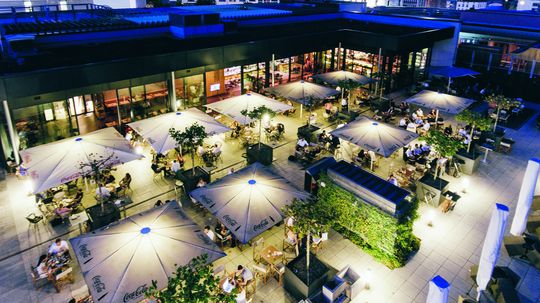
Cities enable economies of scale to be exploited and reduce transaction costs. It is much more cost effective to protect 1,000 people within a city than in 300 highly dispersed homesteads. It is easier to exchange goods and services in a central marketplace than in scattered homes. Many educational and cultural offerings are only viable once a city has reached a minimum population size – a university, an opera house, or a theater, for example. Larger cities enable specialization advantages in labor and service markets, information can be distributed more quickly, and for centuries, shopping downtown was the most efficient way to obtain both necessities and things that were not so essential. In short, we can produce and consume the array of goods and services preferred by many today most economically in cities.
There are also two other points worth making. First, the aforementioned goods and services do not merely consist of private goods, i.e., goods that can be produced in a market economy. People that live in cities also enjoy the benefits of public safety, reliable health care, and an accessible, and therefore public, education system. Second, although we generally only live in a single city, our lives today are governed by veritable networks of cities. No city is completely self-sufficient, and we enjoy visiting other cities for inspiration.

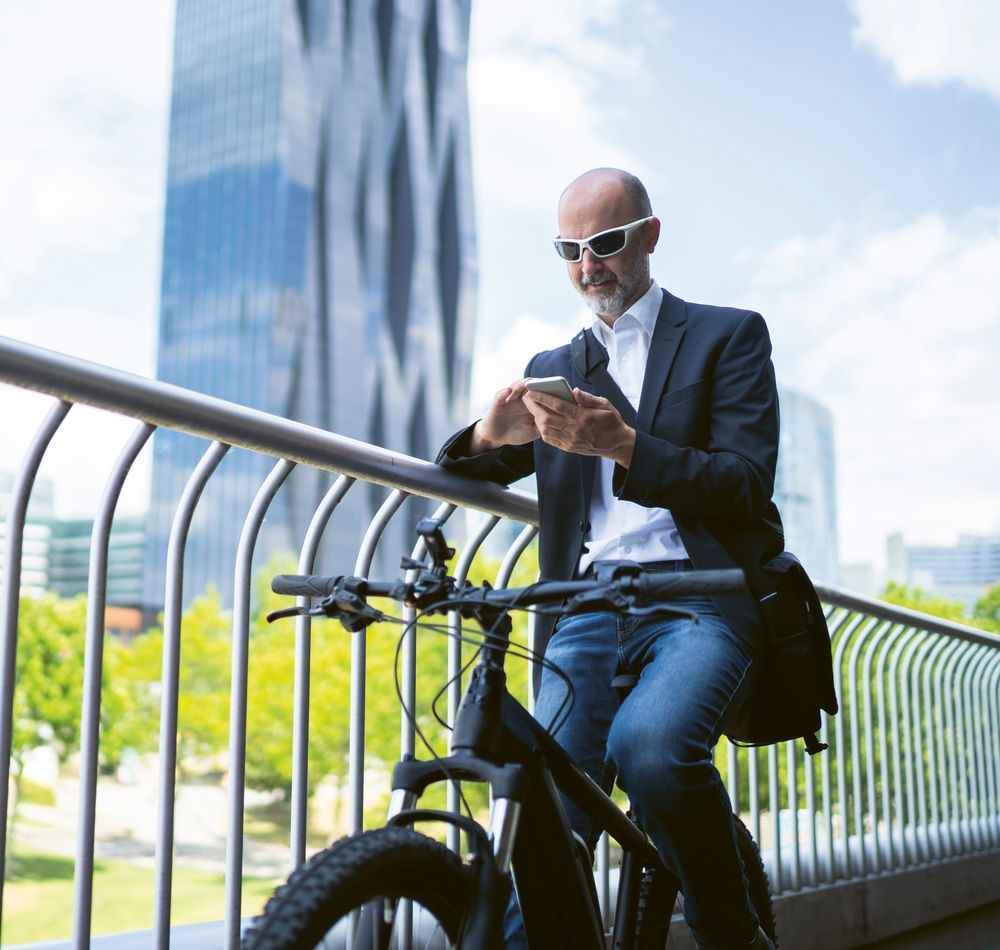
Cities change not through but with Corona
But what is changing now in the wake of the pandemic? To put it in a nutshell, cities are changing not because of the coronavirus, but along with it. Ultimately, it isn’t the pandemic that’s forcing us to change, but the technological and societal changes that were already evident prior to the pandemic. The pandemic “merely” increased the pressure and willingness to change because we were forced to try things that were also possible before – online shopping has been around for a quarter of a century, as has video conferencing. The term “telecommuting” dates back to the 1970s. The pandemic ultimately caused us to participate in a massive social experiment. The experiences we gathered in the process were in many respects stressful, sometimes tragic. But there were also plenty of positive experiences. These will lead to path dependencies that will shape the way we work, shop, and live together in the future. And from this, we can determine a new combination for the trio of needs inherent to ideal cities – driven not only by digitalization, but also by the fact that we live in the richest Europe ever and by the limits imposed on our activities by the threat of climate change. I would like to expound on this below using one example from each of the three needs:
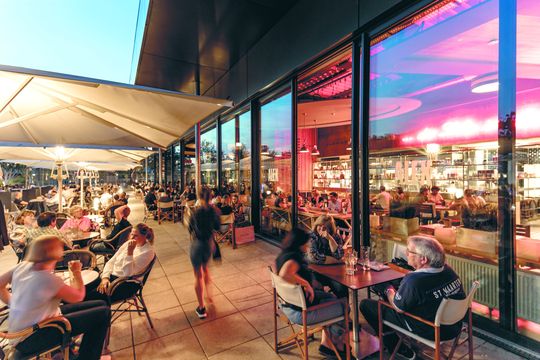
Green cities of the future help save energy
The need for protection caused people to first build thick walls and fortifications around their cities and later install safe transportation and utility infrastructures and adopt extensive occupational safety and fire protection guidelines.
In the coming decades, urban topologies will need to be more closely aligned with whether the measures help save energy. This applies to buildings, building complexes, and transportation services. In the working world, industrialization made tremendous economies of scale in manufacturing possible, while at the same time requiring many simple operations to be performed at a common manufacturing site. Control and supervision were necessary because the work was often hard or monotonous or both combined. Now, many such activities are performed by robots and controlled by algorithms. The purely mechanical nature of the work was initially supplanted by more skilled activities that could be trained through individual e ducation and experience. Because many more people are now involved in the development of new goods and services than ever before, economic development is perceived as uncertain. This uncertainty calls for fast and creative solutions, and such solutions are found more effectively in teams than alone in your study. Ultimately, then, these shifts in the demands of the working world have led to the erosion of the need to be physically present. At the same time, the need to work together in well-functioning teams grew. In the industrial age, buildings often had to first and foremost facilitate efficient work processes. The focus was on optimization so that things could be done right with a clear objective.
How will we live in the city of the future?
In the future, the focus will be on buildings that allow people to work most effectively, where they can identify the right things to do and make progress, even if the objectives are somewhat unclear. This requires more interactivity within teams, more inspiration, more surprises – in short: more room for creativity. Applied to the retail sector, this similarly means moving away from simply supplying to the surprising, the inspiring, the interpersonal, the creative – not everywhere, but more and more frequently. The better this succeeds, the more the traditional products will be purchased almost incidentally for the sake of simplicity. In medieval times, the jugglers came to the marketplaces because that’s where the potential audience was. This is now being turned on its head; the merchants have to go where the jugglers and jesters are drawing the crowds.
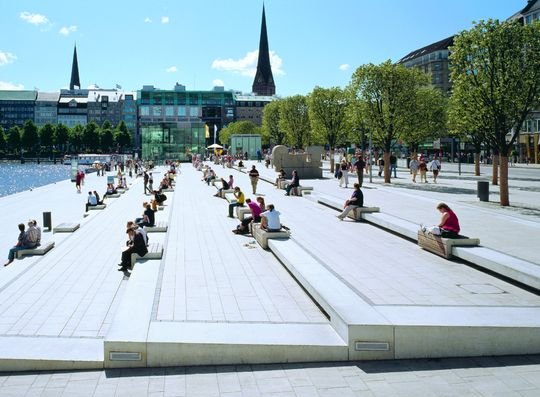
Livable cities with a wow effect
And this leads us directly to the last ingredient in the cocktail of needs: the sense of community. Apparently many people, especially young people, are drawn to the urban core. The disadvantages of the density are more than compensated by its advantages. To keep it that way, cities need space for distractions, for surprises, and for social interaction. Just as Apple built its campuses to keep employees on them as long as possible so they can interact productively, we should envision cities that foster well-being and enable this creative interaction. In cities that foster well-being, everything you need is within walking distance, there’s plenty of room for people to interact, and every now and then, there’s space for a “wow” moment. Much of this does not involve coming up with new ideas – European cities have had these characteristics for centuries – but many things need to be reimagined and consequently rebuilt. If this is successful, in the 21st century we will increasingly live in green, compact cities that somewhat resemble their medieval counterparts. They could be the most wonderful cities ever.
